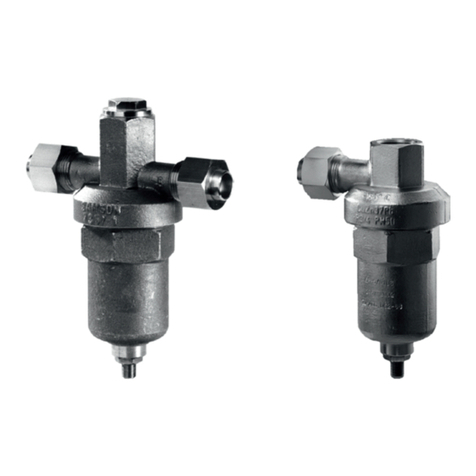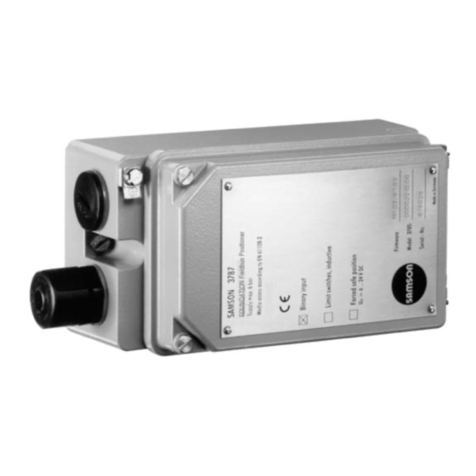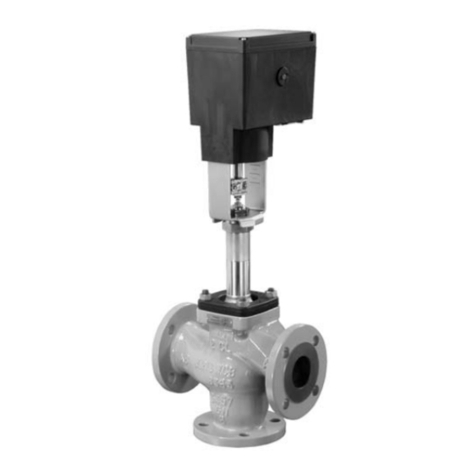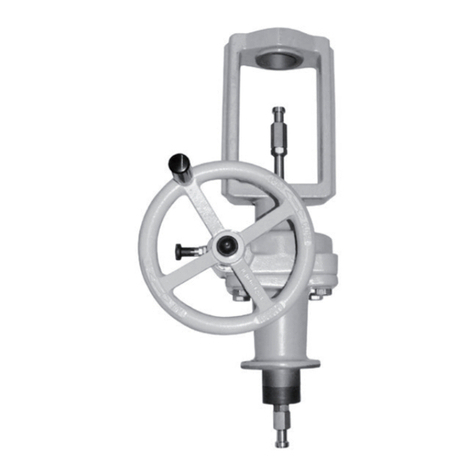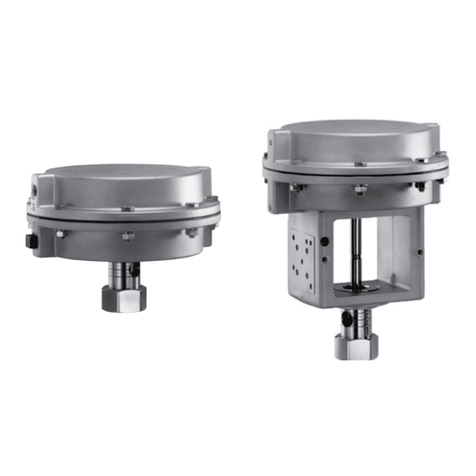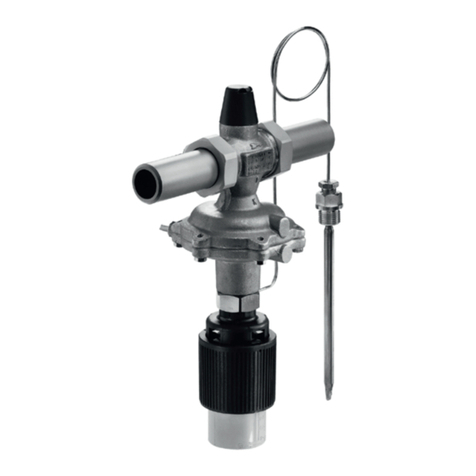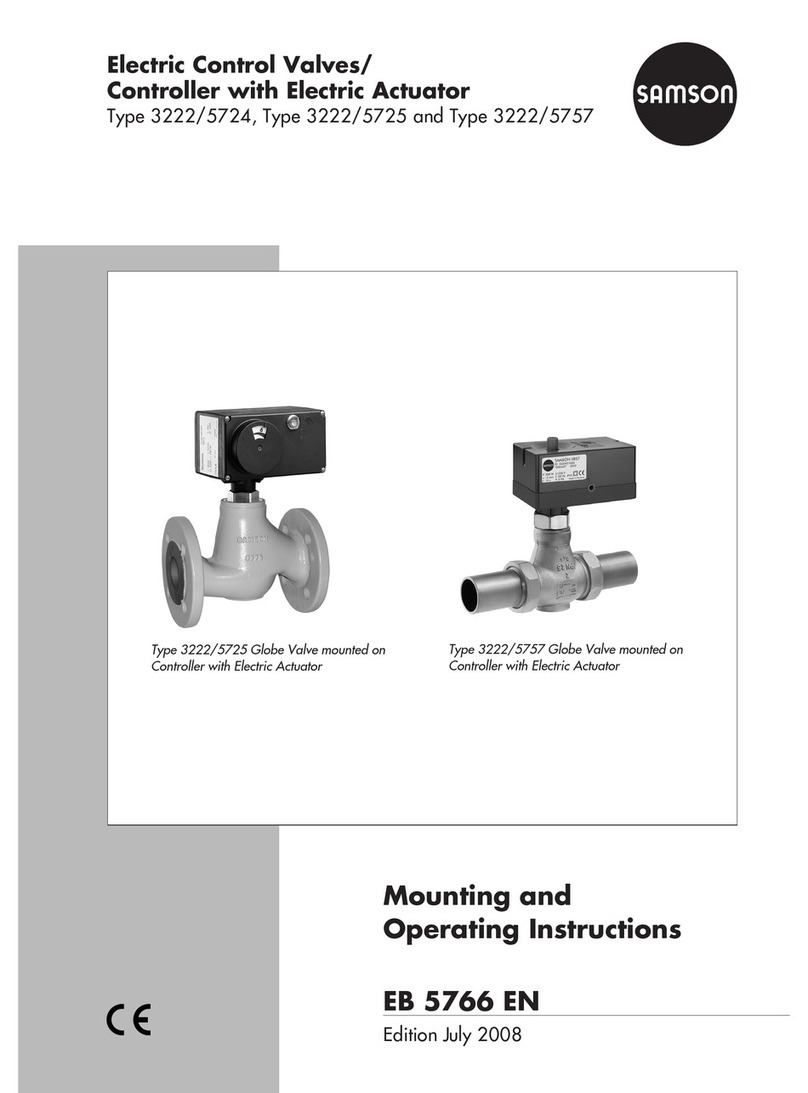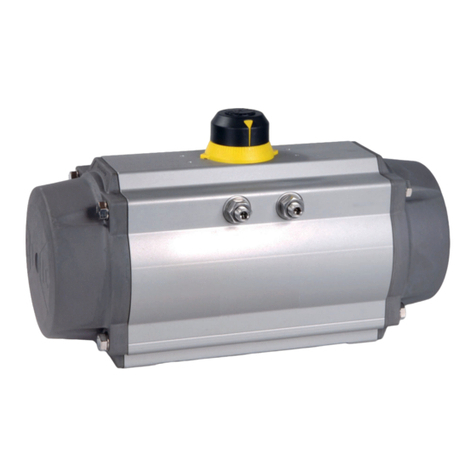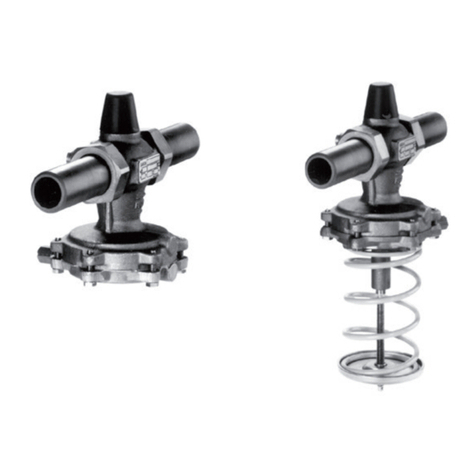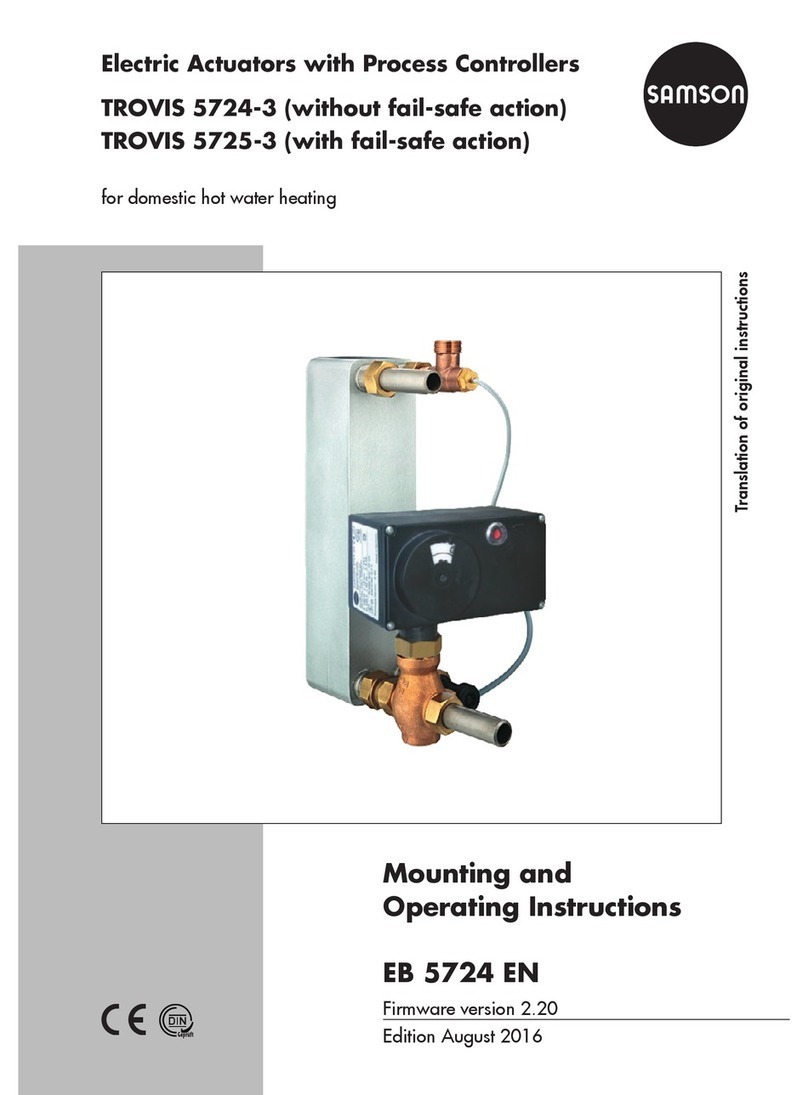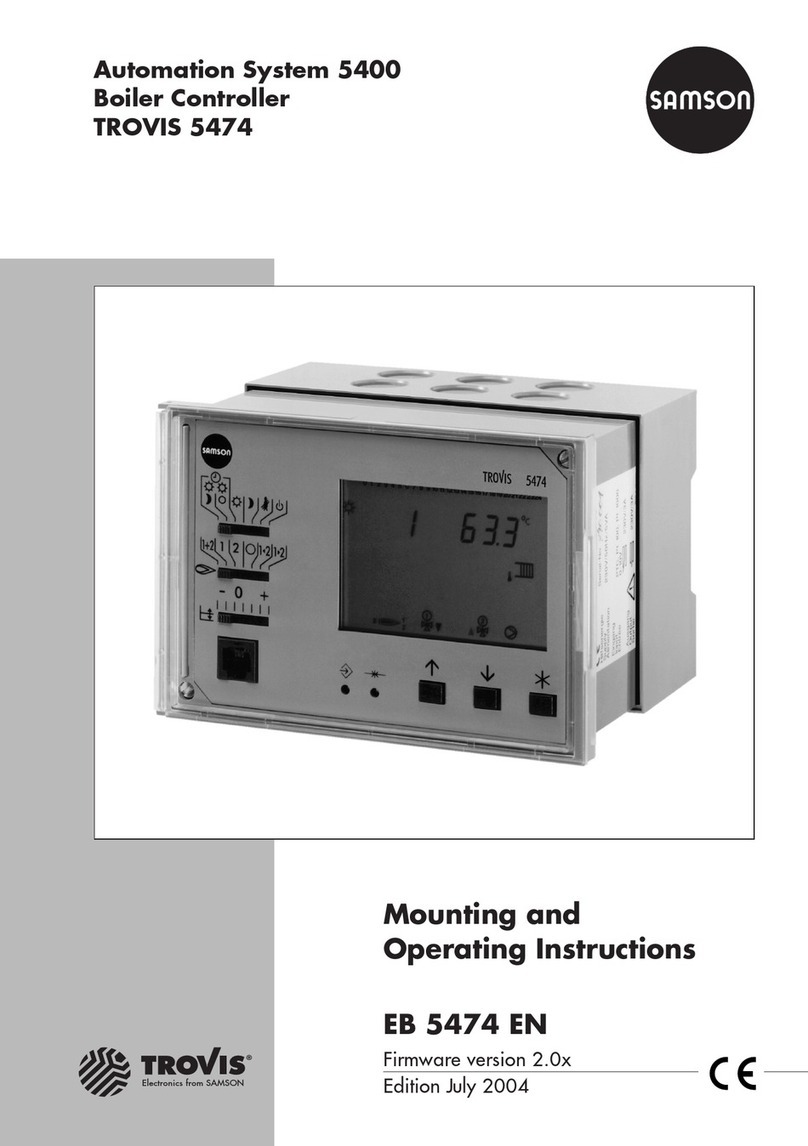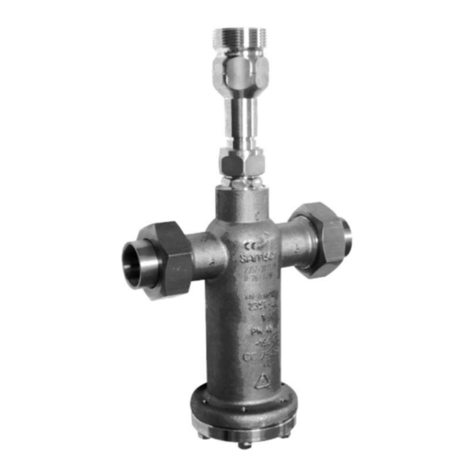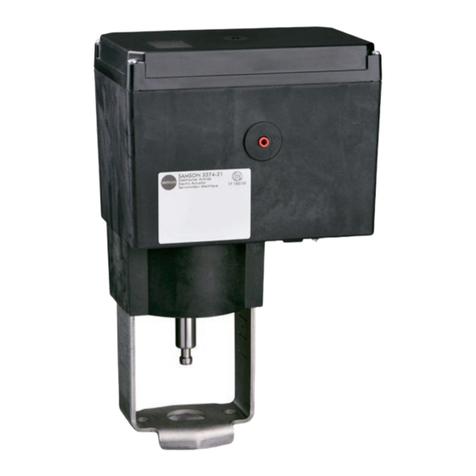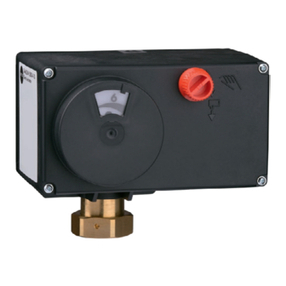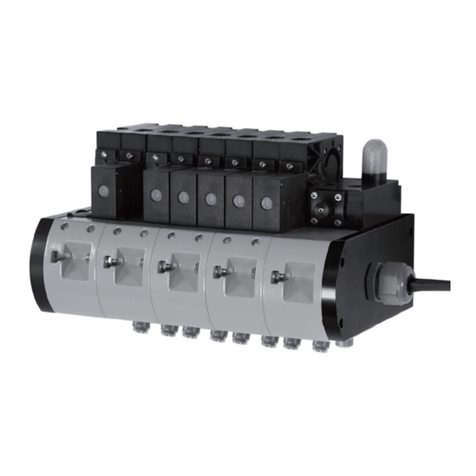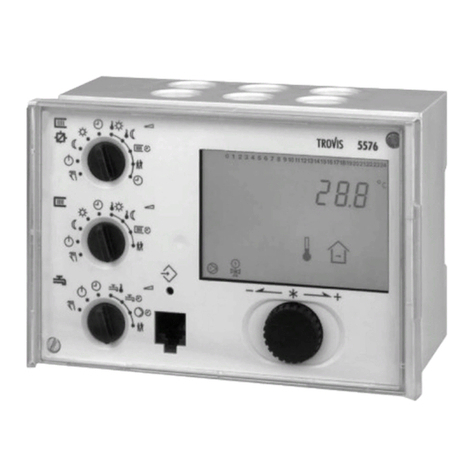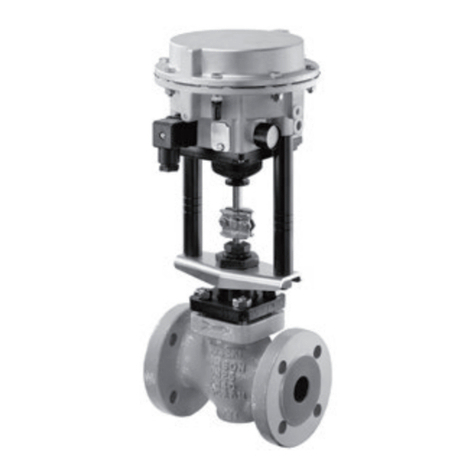
3 Operation
To understand the operation of this control-
ler, use the fold-out page at the end of these
mounting and operating instructions!
The controller is operated over switches and
keys. They are accessible after the clear front
door is opened. The mode switch (A)
switches between the various operating
modes. You can view parameters such as
temperatures and set points using switch (C)
and the keys (H) and (I) as well as determine
the selectable functions and controller param-
eters. During which, you can access the vari-
ous levels described in section 3.3. All set-
tings made and the information required
appear on the display (G).
It is also possible to transfer configuration
and parameterization data with a memory
module in the controller, refer to section .
The following sections contain a description
of the individual switches and keys as well as
concerning the operation of the individual
levels.
3.1 Operating controls on front panel
3.1.1 Mo e switch (A)
Use this switch to select the operating mode:
Automatic operation: Rate opera-
tion/stan -by operation: The control-
ler works according to set times-of-use
and switches between rated and
stand-by operation.
Automatic operation: Rate opera-
tion/re uce operation: The control-
ler works according to set times-of-use
and switches between rated and, in
contrast to previous mode, reduced
operation.
Rate operation: The ventilation sys-
tem is constantly in operation. It is
controlled acc. to the set point(s) for
day, e.g. Supply air day set point.
Re uce operation: The ventilation
system is constantly in operation. It is
controlled acc. to the set point(s) for
night, e.g. Supply air night set point.
Stan -by operation: The ventilation
system is switched off. The frost protec-
tion is active, provided it has been
enabled, see section 5.7.1
Manual operation: In combination
with the selection switch for manual
operation (B), the ventilation controller
can be operated in the manual mode,
see section 3.2.
EB 5177 EN 7
Operating controls on front panel Operation
Y1 Y2 Y3 Y4
1109876542103
